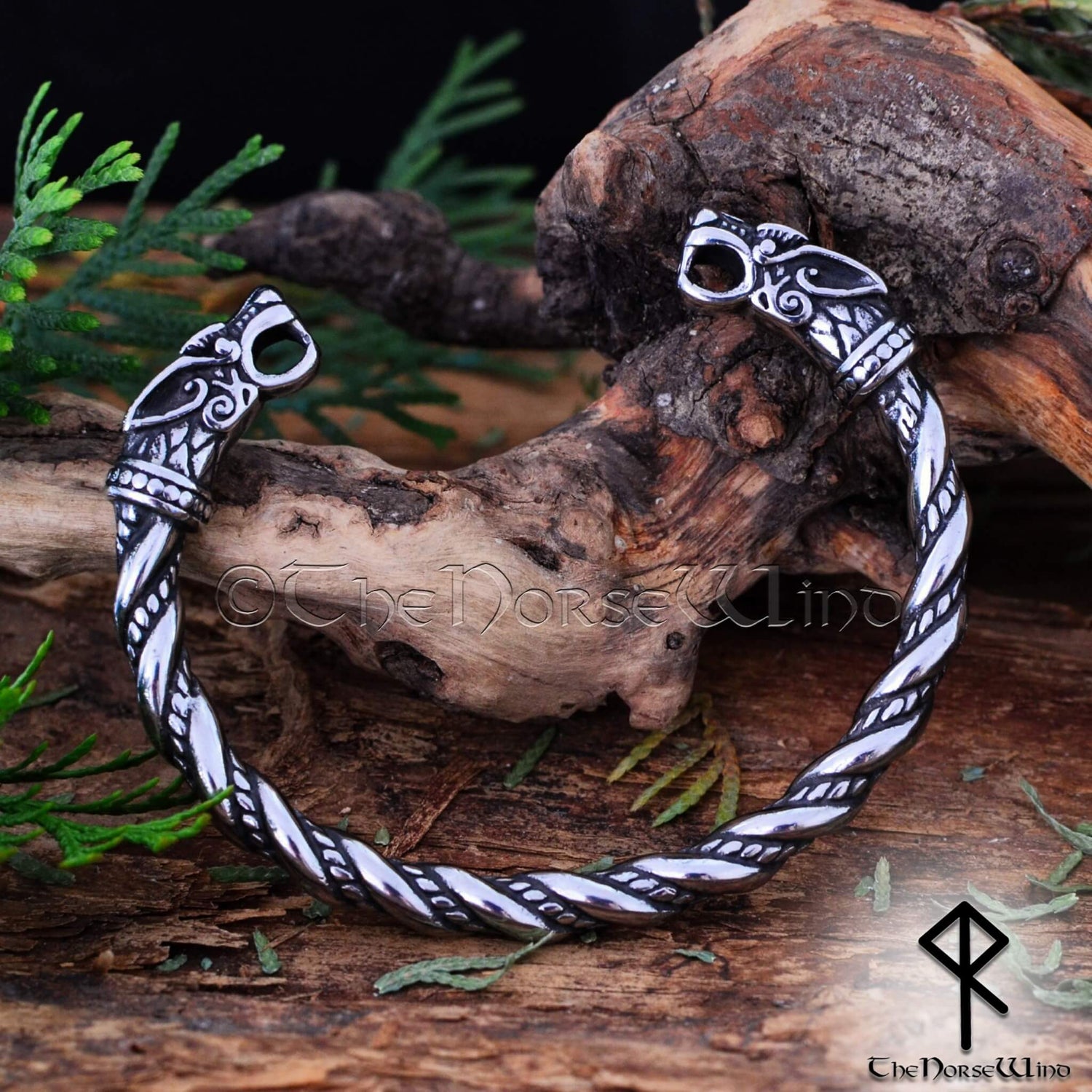Wölfe in der Mythologie und Kultur der Wikinger: Symbole der Macht und Loyalität
Share
Die Wikingerzeit war eine Zeit der Eroberung, Erkundung und des tief verwurzelten Glaubens an die Kräfte der Natur und des Göttlichen. Unter den vielen verehrten Kreaturen in der nordischen Mythologie nahmen Wölfe einen besonderen Platz in den Herzen und Köpfen der Nordmänner ein. Von furchterregenden Bestien der Zerstörung bis hin zu treuen Gefährten von Göttern und Kriegern verkörperten Wölfe sowohl Chaos als auch Verwandtschaft und machten sie zu einem der bedeutendsten Symbole der Wikingerkultur.

Fenrir: Der Wolf von Ragnarök
Der wohl berüchtigtste Wolf der nordischen Mythologie ist Fenrir, der monströse Sohn des Trickstergottes Loki und der Riesin Angrboda. Fenrir wurde gefürchtet und verehrt, da er dazu bestimmt war, das Ende der Götter herbeizuführen. Die Götter erkannten seine enorme Macht und versuchten, ihn mit verschiedenen Ketten zu fesseln, aber nur das magische Band Gleipnir – von Zwergen aus unmöglichen Materialien wie den Wurzeln eines Berges und dem Atem eines Fisches gefertigt – konnte ihn festhalten.
Die Prophezeiung sagte voraus, dass Fenrir während Ragnarök, dem Ende der Tage, ausbrechen und Odin, den Allvater, verschlingen würde. Diese Geschichte von gebundenem Schicksal und endgültiger Zerstörung machte Fenrir zu einem mächtigen Symbol unkontrollierbarer Macht und Schicksals.
Geri und Freki: Odins treue Wölfe
Im Gegensatz zu Fenrirs zerstörerischer Natur hatte Odin, der Herrscher der Götter, zwei treue Wolfsgefährten, Geri und Freki. Ihre Namen bedeuten „gierig“ und „hungrig“ und spiegeln ihren unersättlichen Hunger wider. Diese Wölfe waren nicht nur Odins Haustiere, sondern auch seine wilden Kampfgefährten. In vielen Darstellungen wird Odin gezeigt, wie er sie mit dem Fleisch seiner Festmahle füttert, da er selbst nur von Met lebte.
Geri und Freki standen für Treue, Stärke und die ursprüngliche Natur der Existenz. Für die Wikingerkrieger symbolisierten diese Wölfe die Wildheit, die im Kampf nötig war, und die Kameradschaft, die die Krieger unter ihresgleichen suchten.
Ulfhednar: Die Wolfskrieger der Wikinger
Neben den Göttern spielten Wölfe eine entscheidende Rolle in der Kriegerkultur der Wikinger. Die Ulfhednar waren Elite-Berserker, die Wolfsfelle trugen und mit der Wildheit wilder Tiere kämpften. Anders als normale Wikingerkrieger kämpften diese Wolfskrieger ohne Rüstung und verließen sich auf Geschwindigkeit, Stärke und eine fast übernatürliche Schmerzresistenz. Man glaubte, sie seien vom Geist des Wolfes besessen und kanalisierten seine Aggressivität und Instinkte im Kampf.
Für die Ulfhednar war der Wolf ein Totem des Schutzes und der Macht und symbolisierte ihre Verbindung zu Odin, der auch der Gott des Krieges und der Weisheit war.
Der Wolf in der nordischen Symbolik und Wikingerkultur
Die Dualität des Wolfes in der Wikingermythologie – sowohl als gefürchtetes Monster als auch als verehrter Begleiter – spiegelt das nordische Verständnis des Gleichgewichts der Natur wider. Wölfe waren nicht nur Kreaturen, die man fürchten oder anbeten musste; sie waren Teil des Kreislaufs des Lebens und verkörperten die ungezähmte Wildnis, Verwandtschaft und rohen Überlebensinstinkte.
In der Wikingerkunst tauchten Wölfe auf Runensteinen, Amuletten und Schilden auf und symbolisierten oft die Reise des Kriegers und die Ergebenheit ins Schicksal. Viele nordische Clans und Häuptlinge nahmen sogar Namen an, die auf Wölfen basieren, um ihre Stärke und Ausdauer anzurufen.
Lassen Sie sich mit The Norse Wind vom Geist der Wikinger verzaubern
Bei The Norse Wind ehren wir das Erbe der Wikingerwölfe mit handgefertigtem Schmuck, Kleidung und Wohndekor, die von diesen legendären Kreaturen inspiriert sind. Ob Sie die Kraft von Fenrir, die Treue von Odins Wölfen oder die Stärke der Ulfhednar suchen, unsere Kollektion bringt den Geist des Nordens in Ihre moderne Welt.
Entdecken Sie noch heute unsere Schätze zum Thema Wolf und lassen Sie sich von der ungezähmten Kraft der nordischen Mythologie mitreißen!












